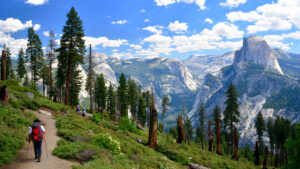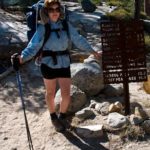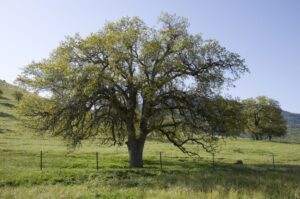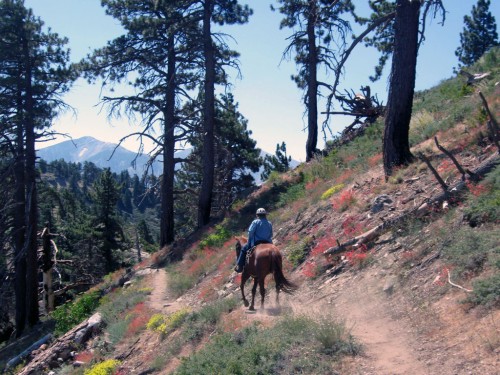Front Page | Lodging | Restaurants | Sierra Wineries | Outdoor Adventure | Art & Entertainment | Community Events
Read More Outdoor Adventures: Visit Yosemite Village | Emigrant Wilderness | National Trails Day | RV Camping | Sierra Hiking & Biking
Outdoor Adventure is sometimes called Outdoor Recreation. It refers to recreation done outside, most commonly in nature. The activities in the Sierra that encompass outdoor adventures are recreation that varies depending on the physical environment that is being carried out.
Outdoor recreation is a broad concept that encompasses a varying range of activities and landscapes. Outdoor recreation is typically pursued for purposes of physical exercise, general well-being, and spiritual renewal. While a wide variety of outdoor recreational activities can be classified as sports, they do not all demand that a participant is an athlete. In the Sierra, recreational areas for various outdoor activities are created for the population.
 Lasing Adventures reports hiking Half Dome is no mean feat, especially if you want to tackle it as a day hike. For most of us, it requires a build up before our bodies are capable of the 8 mile, 4,800 feet of elevation gain hike it takes to reach the top, followed by the underrated 8 mile downhill return, which is punishing on the knees and feet. The good news is, with time and dedication, most people are capable of making it successfully! Lasting Adventures has a simple Half Dome training plan to get you ready to reach the summit: Contact Lasing Adventures for more information,,
Lasing Adventures reports hiking Half Dome is no mean feat, especially if you want to tackle it as a day hike. For most of us, it requires a build up before our bodies are capable of the 8 mile, 4,800 feet of elevation gain hike it takes to reach the top, followed by the underrated 8 mile downhill return, which is punishing on the knees and feet. The good news is, with time and dedication, most people are capable of making it successfully! Lasting Adventures has a simple Half Dome training plan to get you ready to reach the summit: Contact Lasing Adventures for more information,,
Ideas for Lodging; Lodging options in Yosemite National Park range from simple tent cabins at the High Sierra Camps to deluxe rooms at The Ahwahnee. Reservations are available in advance and are strongly recommended, especially from spring through fall and during holidays. If you can't find lodging, consider staying in private lodging:
Camping: Yosemite National Park has 13 campgrounds operating on a first-come, first-served basis. From about April through October, reservationscan be difficult to get, and are on the first-come, first-served campgrounds often fill up early each day. Learn more about campground reservations, camping without a reservation, details about each campground, camping with an RV, and campground regulations. Information about Yosemite Hospitality's High Sierra Camps is also available.
Recreation.gov lists many campgrounds outside Yosemite. The links to community information above also include camping details for those areas. Please note that sleeping in your car or RV is not-permitted within Yosemite except in individual campsites.
Overnight Hiking in Wilderness: With nearly 95% of Yosemite National Park designated as wilderness, backpacking is also popular. A wilderness permit is required).
Eating: Yosemite has numerous food options all year in Yosemite Valley and seasonally at Wawona, Badger Pass, Glacier Point, White Wolf, and Tuolumne Meadows. Additionally, groceries are available all year in Yosemite Valley, Wawona, Crane Flat, and El Portal and seasonally at Tuolumne Meadows.
Picnic areas are available throughout the park. Wherever you eat or bring food in Yosemite, please respect animals at a distance; never feed or approach them. Learn more about how to keep your food from bears and what to do if you see a bear.
 National Trails Day
National Trails Day
First Saturday in June is National Trails Day and is celebrated here is the Sierra. This event will showcase and help promote awareness of the wide variety of benefits that our California trails provide. Find Sierra Trails. Read More
 The Yosemite Tribal Conservation Corps
The Yosemite Tribal Conservation Corps
The National Park Service is working with native tribes and the Yosemite Tribal Conservation Corps to collect and plant acorns, prune, and prepare to burn around the California back oak trees. This is a traditional practice that helps reduce insects and encourage new growth. We learned that the California Black Oaks produce large edible acorns that were the native food that was a staple food source for Native Americans. They have a mild potato-like flavor and can be eaten raw, roasted, or ground into gluten-free baking flour. For more information, contact the Yosemite Tribal Conservation Corps.

Bring Your Horse
The entire length of the Pacific Crest Trail is open to riders and their horses. A ride on the PCT makes lifetime memories and enhances that special relationship between horse and rider. The PCT requires a special mix of experience, skill, research, and careful preparation.